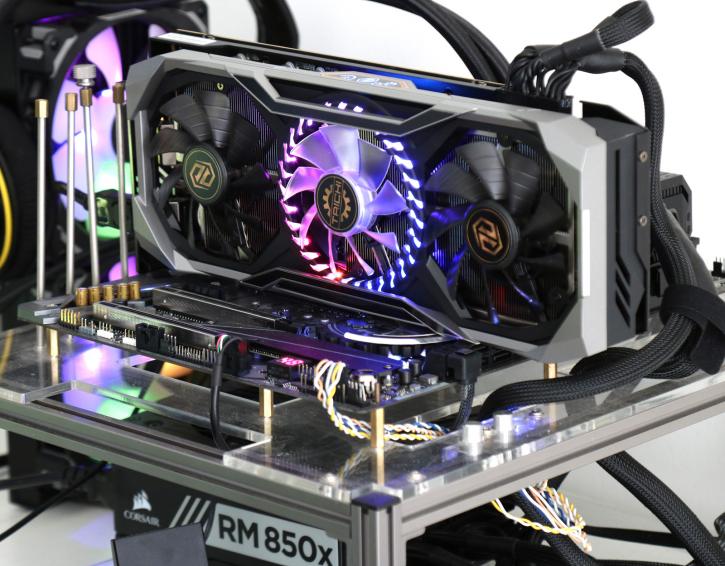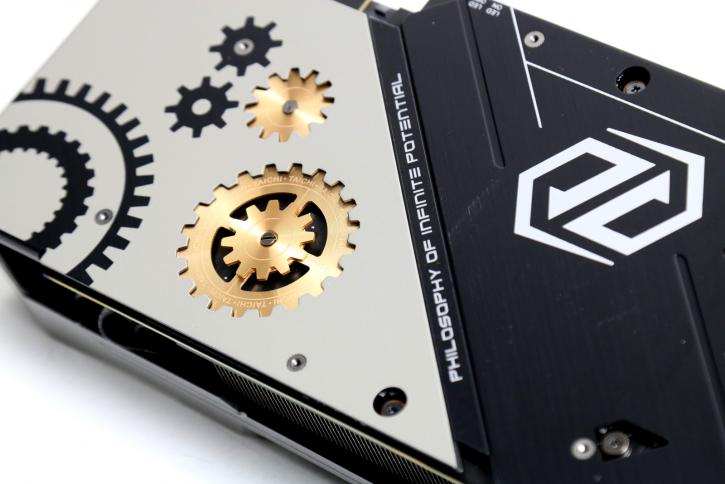Final words and conclusion
.final words
If you realize how long ASRock is selling graphics cards, then you'll be surprised as it was merely last year when they entered the market with the Phantom series. So basically the is the second year that they are putting graphics card on the market, and gosh .. they probably have one of the best looking designs if you ask me. The Tachi OC+ obviously looks 'el fantastico' our taichi based test motherboard :) but next to that it is a solid performer. The reality with the 'factor tweaked' graphics cards from AMD is that they are merely 2 maybe 3% faster on average and that goes for all brands folks. So you need to always weigh in whether ot not the price premium is worth the money for an 'OC+' model okay? So yes, it is a nice looking product with the performance to follow. Acoustics in its out of the box configuration, however, are moderate, please do understand that. As stated in the reference reviews already, NAVI sits at the Vega performance level. That makes this architecture sound and working. The realm AMD is sitting in performance-wise with the RX 5700 series is the non-Super models 2060 and 2070 with exceptions here and there. Then there is, of course, the discussion on how relevant you find hardware-accelerated Raytracing and Tensor support. Most of you don't care at this time, but much like anything in the tech industry, everything will evolve, and AMD positioned itself to be smack down in the middle of that next step in the gaming evolution. By not offering at least RT support, their trump card really needs to be pricing and proper shader-based gaming performance.
.performance
I'll generalize both the 5700 and 5700 XT here, both show good, in fact, super (pardon the pun) strength at Quad HD resolutions in that 2560x1440 realm of resolutions. Games like Battlefield V will make you aim, shoot and smile. As always comparing apples and oranges, the performance results vary here and there as each architecture offers advantages and disadvantaged in certain game render workloads. Battlefield V and Metro: Exodus skyrockets for NAVI. So you'll be seeing wins and losses in perf compared to team green. AMD has got the right amount of graphics memory applied, the right type this time as well as 8GB GDDR6 graphics memory running over that 256-bit bus at 14 Gbps, is done right. The new architecture does show strength and IPC increase, especially seen from Polaris the results are pretty amazing. However, that statement has no merit, as they are not priced the in that same region. Realistically the XT card makes good sense in the Wide Quad HD space (monitor resolution of 2560x1440) and can even properly handle games at 3840x2160 (Ultra HD). Result vary per game title though.
.pricing
The XT reference models are priced at 399 USD for the reference model. The AIB custom premium boards should be roughly 25~50 bucks more expensive, but you may expect this premium Tachi OC+ model to sit close towards 500 USD and 519 EUR. Again, we with an average 2 to 3% performance increase you will need to decide whether or not that price premium is warranted for a factory tweaked model versus a reference clocked one.
.cooling & noise levels
The card tops out at roughly 74 Degrees C while gaming in the standard performance BIOS mode. That's quite normal for Radeon 5700 XT (NAVI10) so yeah, not bad at all, the acoustics I'd rate a moderate. We measured 41 DBa under gaming load, so you will hear airflow but not at a bothersome acoustic level. We heard no coil whine, however as always, any graphics card that reaches 200+ FPS can make a bit of whine, you'll often heat such a thing in the in-game menu, etc. In silent mode you return to reference performance, however, the DBA levels drop off by 2 to 3 DBa towards 39 DBa, and that is more pleasant at the ears. You can select your preferred BIOS with a micro-switch located at the top side of the card.
.energy
The TDP for this XT we measure to be roughly 265 Watts. That number varies a bit per game title, workload, resolution and even refresh rate of course. It's a really substantial wattage. ASRock applied a more extensive power usage (Wattage) in order to comply with the faster clock frequencies.
.conclusion
I will say this once again, the factory tweaks on NAVI10 do not yield heaps of extra performance. Manual tweaking wise open up that power limiter, give it a bit of a bump in frequency and you'll easily gain extra perf with a manual tweak in a ~2050 MHz domain but at the cost of significant increasing power consumption. The memory can be tweaked, but again is limited by AMD to a max value of 950 MHz (= 15.200 GHz effective data-rate). These cards behave well in the normalized 2560x1440 range of resolutions, but with some titles, perf can cave in where at others it takes a lead. Whether or not this performance is justified at the recommended retail prices, I don't know is only something you can decide, yes you the consumer. The card comes with a proper 8GB of GDDR6 memory. Really, that's exactly right and what these products need. Games like Battlefield V manages to pull roughly 110 FPS on average in WQHD for the XT. That's 80 FPS for Shadow of the Tomb Raider and 100 FPS in Far Cry: New Dawn. These are good values at such monitor resolutions and remember we always apply the better if not best, relevant image quality settings. With cooling, the somewhat average noise levels and looks addressed the rest all boils down to performance and sheer pricing. The XT does perform well in many games, and a bit less in others. As such pricing will be so important as NVIDIA has some very competitive 2060/2070 Super cards available as well. And whether you like or disklike RT and DLSS, it does come as an extra added benefit to fool around with. In closing, ASRock delivers a really solid product with the Taichi OC+, it is a pleasure to look at, it cools quite decent and the performance is at the level of all other factory tweaked XT cards. We have to face the fact that NAVI10 is difficult to tame beast, the XT simply put shows a sharp curve thermal curve as you approach and exceed the 200w mark with Navi, and only the biggest and most badass cooler can deal with that. The cooler is capable, but in factory tweaked performance modus operandus, moderately noisy. It's not bad, but it certainly ain't silent. The aesthetic design is brilliant. Also worthy a not is that this card offers six output connects. The pricing we're not 100% sure of what it'll do in stores, but we expect it to hover at the 500 USD/EUR marker and that is a tad high for an XT. But as a card from ASrock who has not been very long in the graphics card industry, we take ur hats of and bow, as this is impressive to observe product.
- Sign up to receive a notification when we publish a new article.
- Or go back to Guru3D's front page




